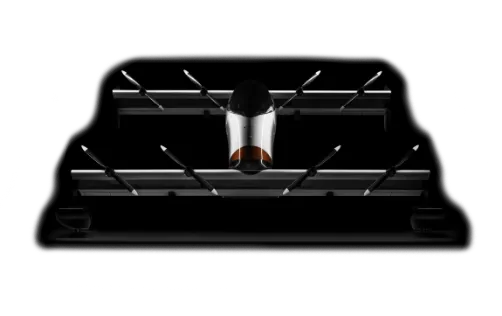
Introduction to Tilt Aircraft
, CEO, Head of Engineering
Background
In the field of aviation, innovation and simplification can come together in powerful ways. Based on a tilt aircraft aero architecture, the Pivotal Helix is a personal aerial vehicle that embodies this principle. By minimizing complexity, Pivotal exhibits a novel design approach that dramatically yields simplification, resulting in fundamental advantages in weight, cost, and reliability.
The Pivotal Helix is a powered lift aircraft that relies on two sources of lift:
- Lift generated by engine thrust for vertical takeoff and landing (VTOL)
- Lift from two fixed wings for horizontal flight
Before Pivotal, most powered lift VTOL aircraft combined vertical and horizontal flight modes by tilting their wings, their rotors, or by using complex directional nozzles to redirect jet exhaust. Unlike aircraft with tilt-wing and tilt-rotor designs, the Pivotal Helix achieves vertical takeoff and landing by rotating the entire aircraft.
To understand how tilt aircraft work, let’s start by looking at tilt-wing and tilt-rotor designs.
With tilt-wing aircraft, the wings rotate from a horizontal to a vertical position, allowing the propellers to provide vertical thrust for takeoff. After takeoff, the wings rotate back to horizontal, repositioning the propellers for forward flight. Previous attempts at tilt-wing aircraft include the Vertol 76, the world's first flyable tilt-wing aircraft in 1957, and more recently, the Airbus Vahana and the NASA GL-10 Greased Lightning.
Rotating an entire wing with attached propulsion, while meeting reliability and structural safety requirements, presents numerous challenges. After several attempts, Airbus and NASA did not advance their tilt-wing aircraft designs beyond the prototype stage. More recently, Sikorsky announced plans to develop a tilt-wing hybrid VTOL in their aim to create a viable tilt-wing aircraft.
In the case of tilt-rotor aircraft, the propellers face upward to achieve lift, then tilt forward for horizontal flight. The Osprey (Bell Boeing V-22) is a well-known tilt-rotor aircraft. Within the emerging segment of electric VTOLs, aircraft from Archer, Beta, Joby, and Wisk employ tilt-rotor designs for their air taxi and cargo transport aircraft.
The first video below shows the Pivotal aircraft taking off in hover mode, then transitioning to cruise mode for forward flight. In the second video, the aircraft transitions from cruise mode to hover mode for landing. Note that the entire aircraft rotates, not just the wings or rotors.
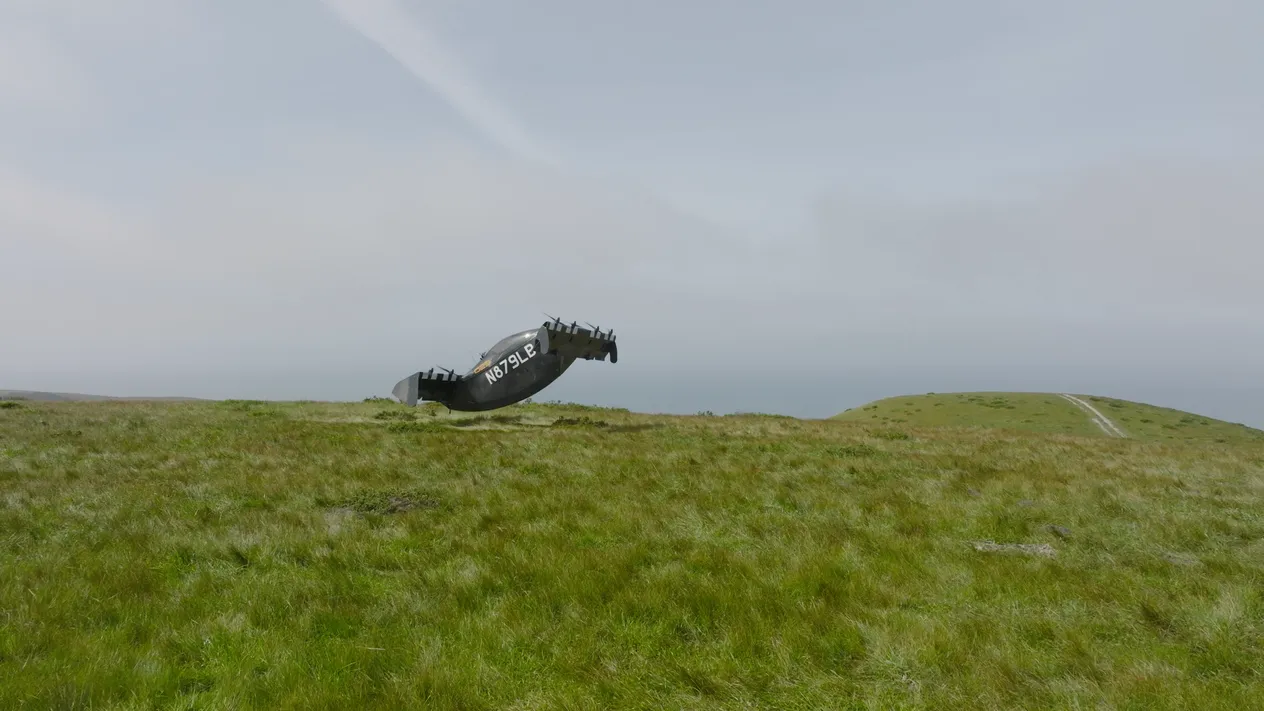
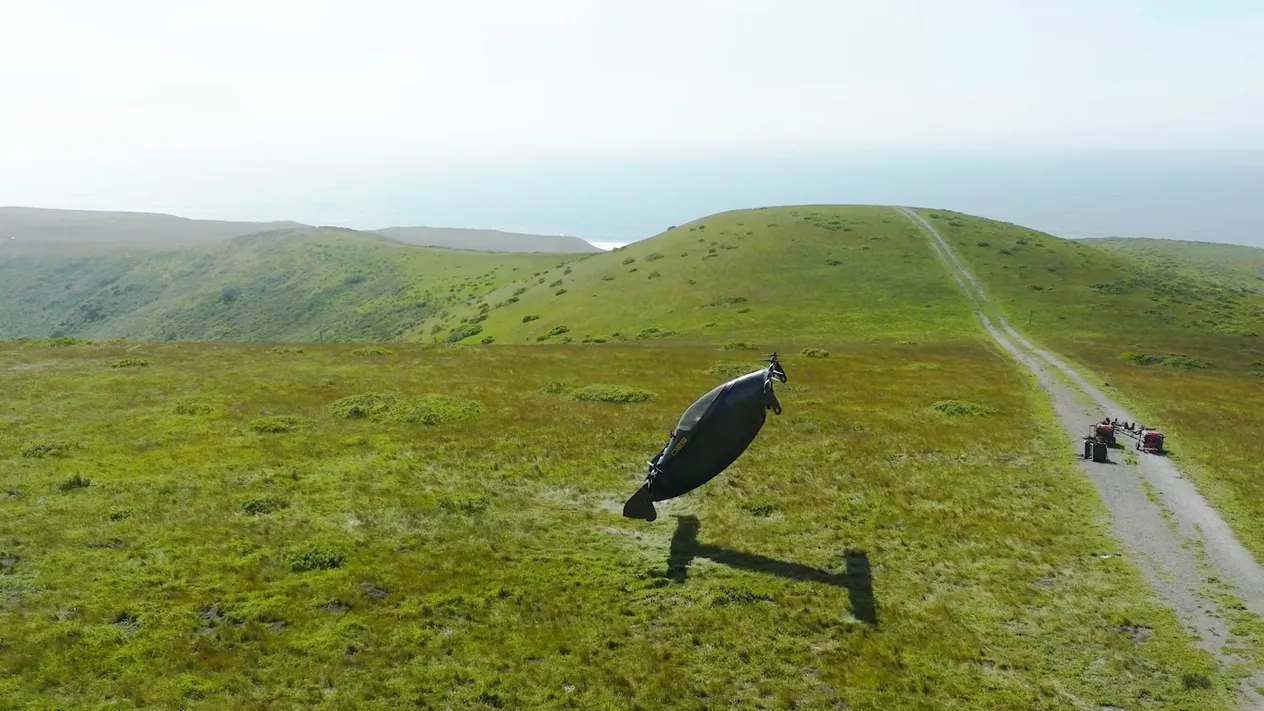
Present-day tilt aircraft like the Helix share some DNA with the tail-sitter, a class of VTOL aircraft conceived of and patented by Nikola Tesla in the 1920s.
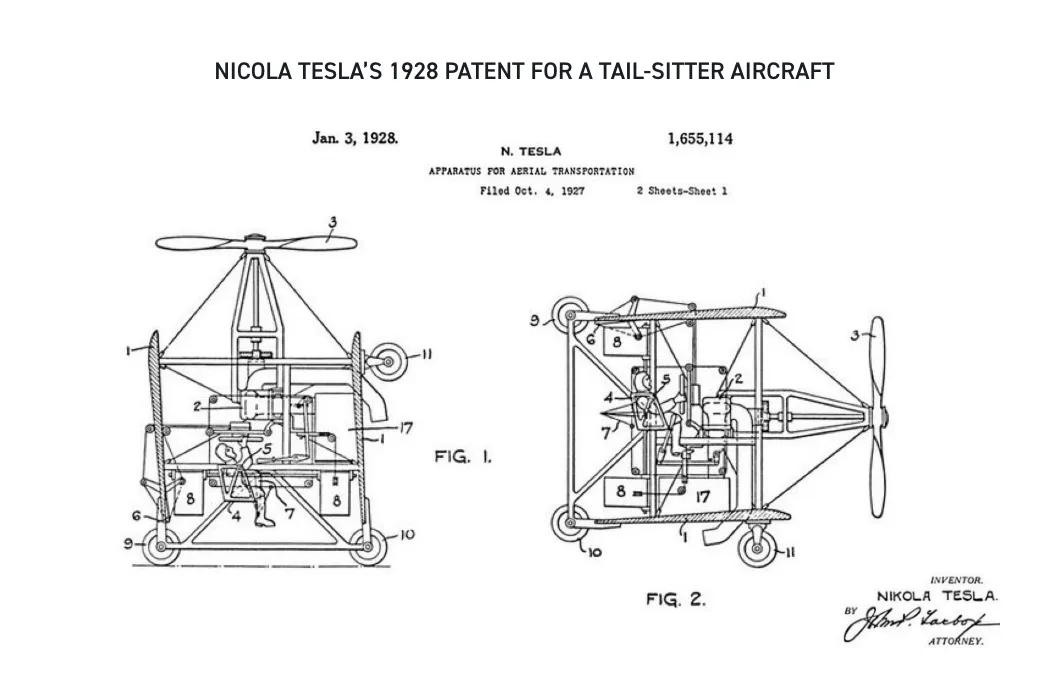
What tilt aircraft and the tail-sitter have in common is the primary propulsion systems used in forward, winged flight use the same power source delivering thrust to control vertical flight.
However, the tail-sitter has two fundamental drawbacks, both of which are addressed by Pivotal’s tilt aircraft architecture:
- Continuous control: In the tail-sitter, during transitions from hover to cruise and vice versa, there often exists a significant impairment to the aircraft’s controllability while transitioning from hover flight to forward flight. In extreme examples, as with certain small Unmanned Aircraft Systems (sUAS), there is a brief period where the pilot has very little control of the aircraft. In contrast, the Helix provides continuous controllability to the pilot throughout the range of pitch and speed.
- Landing safety, especially in wind: In takeoff and landing position, the tail-sitter airframe is tall, leading to low pilot visibility and landing challenges under windy conditions. Lacking the ability to direct sufficient thrust to counteract the wind, a topple-over event is a constant risk when landing in windy conditions. Because Helix is oriented into the wind and pitches as low as is necessary to achieve a pre-landing stationary hover, it lands flawlessly on its rounded keel, even in higher winds up to 20-30 knots. Landing is easier, reliable, and inherently, far safer.
The first significant prototype program to deliver a fully-functional manned tail-sitter was the Convair XFY-1 Pogo in 1954. Dozens of programs to develop tail-sitter aircraft have been attempted, and all attempts to implement tail-sitter architecture in a production manned aircraft have so far failed to mature, despite the flight capabilities delivered. Today, only a handful of small, unmanned aircraft systems based on the tail-sitter aircraft architecture are in use.
The Advantages of Tilt Aircraft
The primary benefits of tilt aircraft stem from their inherent reliability and safety, containing fewer moving parts compared to their tilt-wing and tilt-rotor counterparts.
Simply put, by combining critical components and reducing complexity, tilt aircraft minimize points of failure and offer greater operational reliability.
To explain the simplicity underlying the tilt aircraft design, it may help to first define a few key components:
- Elevon: an aircraft control surface that combines the functions of an elevator (tilting the nose of the plane up or down) and an aileron (rolling the plane left or right); the Helix has four elevons on each of its wings, for a total of eight
- Actuator: the hardware and software system that converts battery energy into mechanical force to control the propellers and elevons
- Fly-by-wire: the electronic interface that converts the pilot’s joystick movements into actuator commands
The Helix has 16 independent actuators. Eight actuators drive the propellers with a single purpose — to spin the propellers on a single axis based on the fly-by-wire commands. The remaining eight actuators drive the elevons in redundant pairs to control the direction of flight.
The two essential forces that keep an aircraft flying are lift and thrust. Lift is generated by the wings moving through the air, while thrust is the force produced by the motors that rotates the propellers. Lift and thrust work together to overcome gravity and air resistance, allowing the aircraft to fly.
In a tilt aircraft, the balance between lift and thrust changes significantly based on the aircraft’s pitch. The Helix tilts between hover and cruise with continuous control, the propellers continually varying thrust and the wings continually adjusting lift.
The illustrations below show the changes in lift and thrust, with constant gravity (represented by the green, blue, and red arrows, respectively) as the aircraft shifts from hover mode to cruise mode.
TILT AIRCRAFT STAGES FROM HOVER TO CRUISE
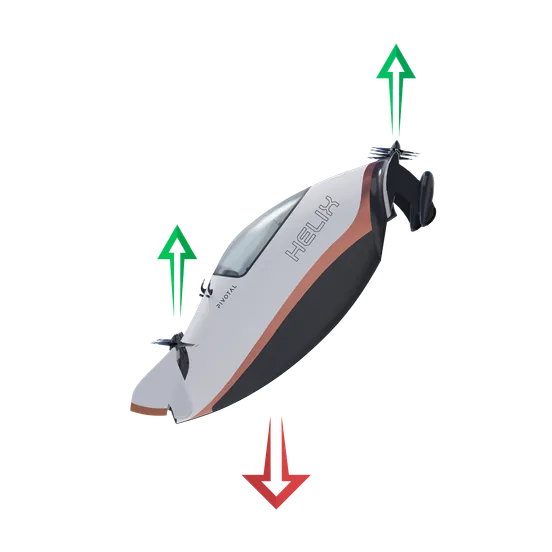
STAGE 1 STEADY-STATE HOVER
In steady-state hover, the aircraft is nearly vertical, with the propellers providing all the thrust necessary to keep the aircraft airborne. The wings are generating minimal lift in this position.
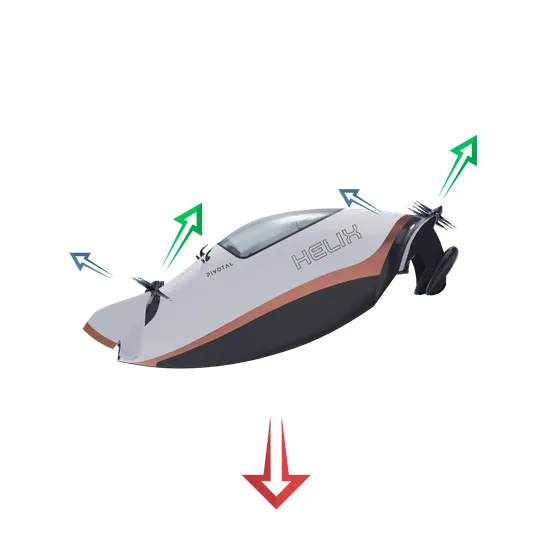
STAGE 2 LOW-PITCH HOVER
As the aircraft tilts forward in low-pitch hover, the wings start to generate more lift. The propellers now begin reducing thrust as the wings add lift to keep the aircraft airborne.
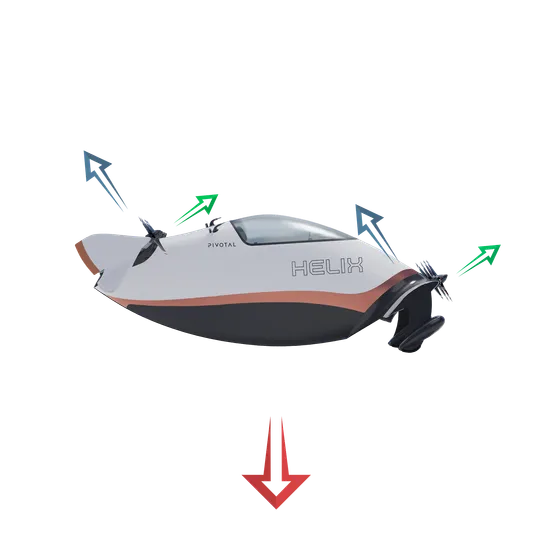
STAGE 3 HIGH-PITCH CRUISE
With the aircraft tilted even further forward in high-pitch cruise, the wings generate significant lift. The motor thrust via the propellers is reduced further, as the wings are now doing more work to keep the aircraft aloft.
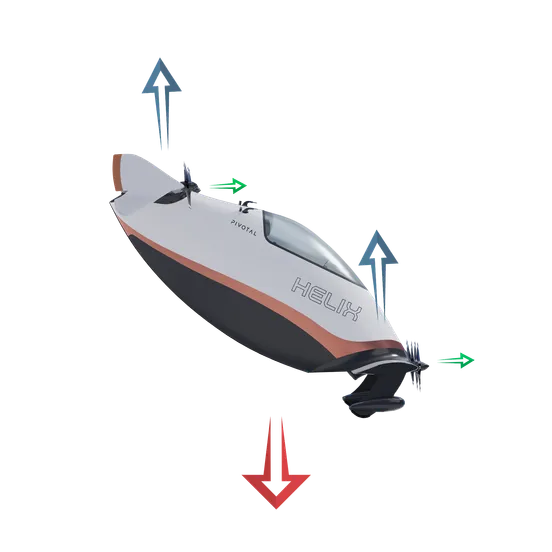
STAGE 4 STEADY-STATE CRUISE
In steady-state cruise, the aircraft is flying with its wings nearly level, maximizing the lift generated. This is the quietest, most efficient phase of flight as the propellers only need to provide a fraction of the thrust required in hover mode.
With Pivotal’s Helix and its predecessor, the BlackFly, the pilot maintains complete control authority of the aircraft throughout the hover-to-cruise transition, while differential thrust from the eight propulsion units pitch the entire aircraft to the desired position — from vertical to horizontal flight and the entire range between.
In essence, Pivotal uses software to address a problem traditionally solved by complex mechanical means.
If the Helix were a tilt-rotor aircraft, each propeller would have a second axis of rotation, positioning the propellers from horizontal to vertical flight. This additional axis of rotation would increase the number of actuators from 16 to 24, adding to the complexity of the flight controls and reducing system reliability. Additional parts required for tilt-rotor operation would also increase aircraft weight.
The Helix relies on at least six of its eight motors to provide thrust to carry the aircraft. The aircraft is tolerant to a single motor-out condition. Along with the increased reliability from the simplicity of electric motors, fault tolerance, a design principle exhibited throughout the aircraft, will allow Helix to achieve type-certifiable reliability in the future MOSAIC certification, where aircraft certification in the Light Sport Aircraft (LSA) class is first achieved through performance, rather than inspection of design elements.
The elegant simplicity of tilt aircraft engineering lowers weight and production cost — two major advantages in the Helix FAA Part 103 strategy. The ultralight classification also gives Pivotal an edge in building customer acceptance in the emerging eVTOL market.
Charting the Future
To support our innovative tilt aircraft design, Pivotal has optimized the Helix aircraft design to become the first platform that includes the aerostructure itself, along with electric propulsion, control systems, and pilot training.
Looking ahead, tilt aircraft aero architecture holds immense promise for ultralight and light sport aviation. The relative simplicity of tilt aircraft embodies an appealing ‘less is more’ approach to aircraft design and manufacturing.
Of course, tilt aircraft represent only one of many possible aero architectures Pivotal is considering as our business expands and we solve for additional use cases in broader markets. Inevitably, form follows function, and Pivotal is no exception in the creation of new aircraft system designs.
As the FAA and international aviation authorities bring electric propulsion and multi-rotor aircraft into everyday aviation, they are supporting the advancement of tilt aircraft from concept to reality, positioning this distinctive aero architecture to grow and become integrated into the larger aircraft ecosystem.
We are finding that Pivotal’s ability to rotate aircraft continuously between vertical and forward flight by tilting the whole airframe is a major advantage in delivering unmatched reliability, safety, weight, and cost advantage across a broad range of applications.